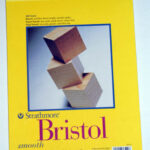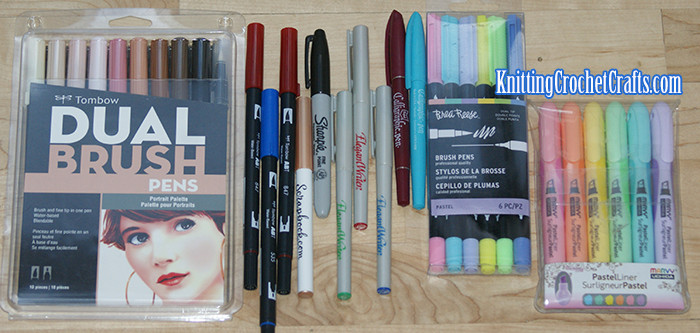
Pens and Markers: Tombow Brush Markers; Calligraphy Markers; Brea Reese Brush Markers; and Marvy Uchida Pastel Highlighters
There are bunches of excellent reasons you might want to learn how to draw with markers. The ink from markers dries fast — so, unlike paintings, you can finish a marker art piece quickly, without excessive amounts of down time. Like paints, markers come in zillions of attractive colors — but they can also be blended together to create even more color nuances. You’ll appreciate the fact that you never have to reach for a pencil sharpener when drawing with markers. And prep time is almost nonexistent — you won’t have to mess around with soaking or stretching papers or priming canvases.
Topics Covered on This Page:
- Supplies You Need for Drawing With Markers: Marker Paper, Marker Brands, Coloring Books; I’ve limited this list to mention mostly brands that I have personal experience with and can give you helpful information about. Therefore this is not a comprehensive list of ALL available art markers, papers and related supplies.
- Types of Art Markers
- Tips for Drawing With Markers: How to Approach the Task of Laying Out Your Marker Drawings
Marker Paper
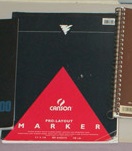
Canson Pro Layout Marker Paper
The drawing surface you choose will have a significant effect on how long the ink in your markers lasts. Most ordinary papers will absorb a lot more ink from your markers than is ideal. So, if you’re serious about drawing with markers, marker paper will be one of the best investments you can make for prolonging the their useful life.
Another issue is that markers will typically bleed through to the back of most drawing papers — and this is not an issue with high-quality marker paper.
There’s one more issue that I just learned about: That is, with brush tip markers, you need to select the smoothest possible surfaces. This is because contact with rougher papers will cause the marker tips to fray and wear out quickly. Dedicated marker paper is ideal for this, whereas many other types of papers are not.
Bristol Board
Over the years, I’ve used Bristol board as my surface of choice for dozens or possibly hundreds of mixed media pieces that included marker drawings plus other media (ink sprays, watercolor paints, acrylic paints, collage, etc). I do a lot of collaging, card making and scrapbooking with marker-drawn details, and I found Bristol board to be the ideal surface for this type of work.
Bristol board is hefty enough that bleed-through is not typically an issue. I haven’t done any scientific studies to determine whether excess ink absorption is an issue with Bristol board, but I’d guess that it probably does absorb more ink than marker paper does. At any rate, the experts at Strathmore recommend their Bristol board as a suitable surface for marker art — and I can confirm that it works well, having used Prismacolor markers to color on countless greeting cards I’ve made out of Strathmore’s Bristol board.
Coloring Books
Some coloring books are intended for use with markers. Adult coloring books, in particular, may include detailed images that make markers a better choice than crayons would be for coloring them. Because bleed-through can be an issue when you color in coloring books with markers, the ideal coloring book has illustrations only on one side of each page.
See Also: Adult coloring
Types of Art Markers
Art markers come in a variety of sizes and colors. Their tip shapes vary; there are chisel tipped markers, brush tipped markers, fine-tipped markers. Some are double-ended markers, with a different type of tip on each end. Markers can also have different types of colorants; there are paint markers, dye markers and ink markers. The colorant in your markers will be dispersed with either alcohol, water or solvent, which further distinguishes the various markers from each other. Each of these types of markers performs differently from the others.
Drawing Markers Brands
- Tombow Markers
- Copic Markers
- Altenew Markers
- Leisure Arts Markers
- Sharpie Markers
- Prismacolor Markers
- Crayola Markers
Tombow Markers
Tombow manufactures brush markers, alcohol markers, brush pens, drawing pens, colored pencils, highlighters, marker storage cases, adhesives, erasers and other related art / craft / office supplies. Artists and crafters are using Tombow markers for a variety of purposes including adult coloring, brush lettering, drawing, illustration, creating animations, drafting, scrapbooking, journaling and art journaling.
I recently purchased a set of Tombow Portrait Dual Brush Pens; this set includes markers in a range of pale and dark flesh tones. I also bought a couple of extra single brush pens — one in cobalt blue and another in crimson. I chose these colors for a couple of reasons. One: I am interested in using these markers to do fashion sketching, so the flesh tones will be useful for illustrating my croquis. Two: I am also interested in using them for scrapbooking, journaling and planner layouts. The cobalt blue appears like it will coordinate well with my ocean / beach / travel / sailing layouts, and I want to use it for brush lettering some journaling text onto my layouts. Color #899, Redwood, looks as if it is an exact match to some of the architectural details on a historic site in Portugal that my husband and I visited, and I was interested in using this particular color (which is included in the portrait set) on several of my scrapbooking layouts. This was one of the primary reasons I decided to buy the portrait set — because it had this color plus so many other useful colors.
I haven’t actually started my drawings with these pens yet, but I will report back soon and let you know how it goes.
Copic Markers
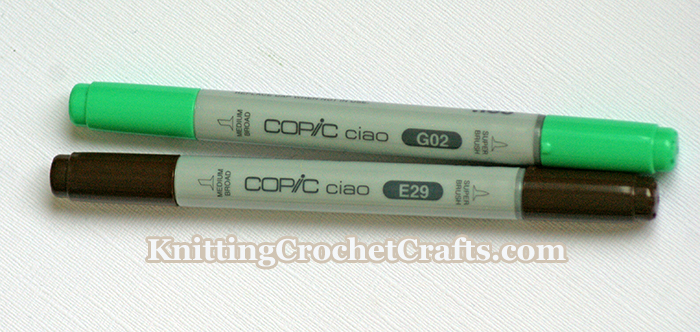
Copic Ciao Markers in Spectrum Green and Burnt Umber
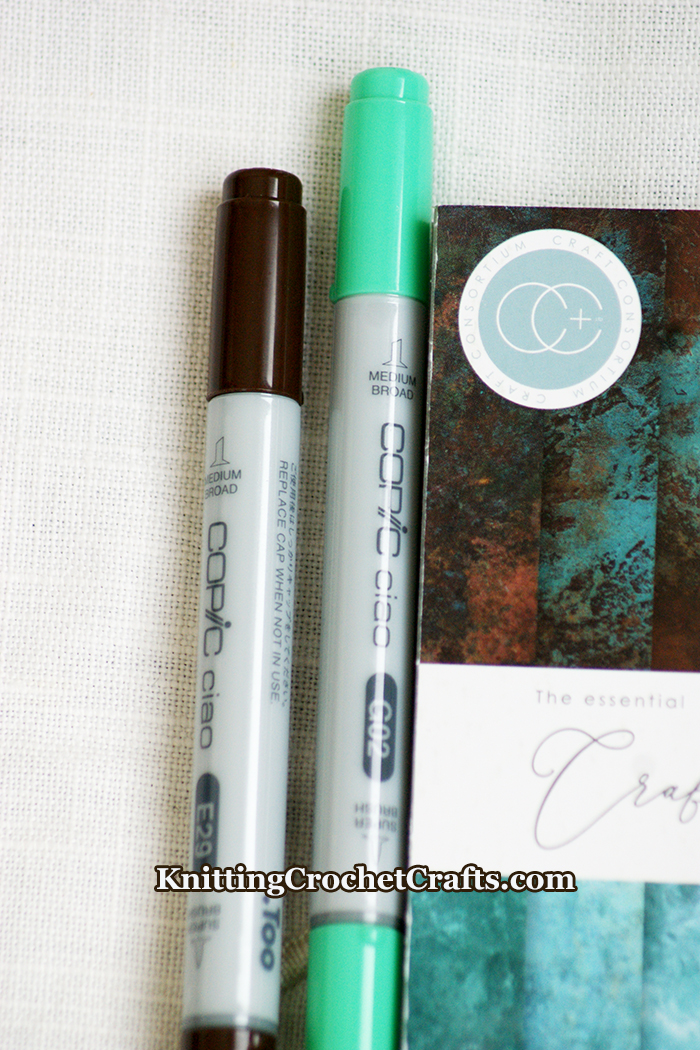
Copic Ciao Markers With Craft Consortium Paper Pad
Other designers have told me that Copic markers set the gold standard for art markers. One of the main reasons for this: Copic markers are refillable, whereas many other marker brands are not refillable.
Artists have used Copic markers to create some of the most beautiful marker art and fashion illustrations I have ever seen.
It took a long time before I was willing to take the plunge and invest in Copic markers. They are expensive, and this is the main reason I was hesitant about using them. Long before I bought my first Copic marker, I was convinced they are worth the price — simply because of all the other artists’ reviews and testimonials I have heard and read. I was also 100% convinced that a refillable art marker would definitely be worth paying for.
But it still took me a long time to actually make an investment in Copics of my own, mostly because marker art is not my primary art form; I use markers for quick sketches and as quick accents for my other paper craft projects. I invest a lot more in art supplies such as oil paints, gouache paints, rubber stamps and stamping inks. It was typical for me to prioritize buying other types of art supplies rather than investing in Copics.
I finally decided to make a small investment in Copic markers so I could color in some of the stamped images I’ve been creating with stamps I purchased. So far, I have had favorable experiences coloring and drawing with Copic markers.
If illustration is your primary art form, I think you should absolutely consider investing in at least a few Copics to try them out – then decide from there whether it’s worth heavily investing in a more substantial set of Copic markers.
If you’re a casual paper crafter, I think it’s a tougher decision as to whether Copics are worth it. There are a lot of other really cool tools and supplies you could buy for the same money. Which is, of course, why it took me so long to get around to buying these markers for myself, and it’s also why I have a small collection of Copics rather than an enormous one.
Altenew Markers
Altenew makes a variety of markers including alcohol markers and brush markers. Some of their markers are refillable and some are not. I have purchased some of their refillable alcohol markers and can highly recommend them; they color beautifully and offer an outstanding value for the money you’ll spend on them.
Prismacolor Markers
Out of all the art markers I’ve had the opportunity to try, I got the most and best use out of my Prismacolors. I had about a dozen individually-purchased Prismacolors that each had a fat chisel-tip end on one side and a fine-tipped end on the other side.
I LOVE the selection of colors available from Prismacolor. It can be hard to find suitable skin tones from some other marker brands, but this is not a problem with Prismacolors.
I’m having a hard time remembering exactly how long I had my Prismacolors — but it was a LONG TIME. I think maybe I got them when I took my first class in fashion illustration. That would’ve been in summer of 1994. I got rid of them right before I moved aboard a sailboat in 2010 — by then, they were starting to dry out. If that’s an accurate timeline, I had those markers for more than 15 years. Even if it isn’t an accurate timeline, it’s safe to say that I had my Prismacolors for a loooooong time, and I got a lot of use out of them.
Important note: Marker art is NOT my art form of choice – so my Prismacolors didn’t get the kind of heavy use that you’ll likely give them if you are an illustrator. If illustration is your thing, I think it’s safe to say that you will not get 15 years worth of use out of your Prismacolors. But even so, you’re likely to get a lot of use out of them.
Pro Tip: If you notice your Prismacolors starting to dry out, you can sometimes extend their life by giving them a little refresher with isopropyl alcohol.
I used my markers more than just occasionally; they were what I usually reached for when I was doing a quick sketch, creating a color knitting chart, coloring in little details in rubber stamped art, making greeting cards, signing the backs of Art Trading Cards (ATCs) or ACEOs I made, or other things like that. And I did all those things fairly often – but none of those uses require intensive amounts of ink, which I am sure is why my Prismacolor markers lasted so long.
Sharpie Markers
I used to have a set of colored Sharpies that I bought from Costco. I forget how many Sharpies were in the set, but I think it was somewhere around 21 or 22 markers.
At the time, I used them constantly, but I sort of have a love-hate relationship with Sharpies. I love them! And there are things about them that I really hate, too. But mostly, I love them. Er, sort of.
Unless you plan on drawing on a non-traditional surface like acrylic, sharpies aren’t really what you want for marker art. They bleed through to the back of many papers. They also don’t smell good.
I used to make bunches of acrylic mini albums and scrapbook pages, so that’s what drew me to Sharpies in the first place. For that purpose, I can highly recommend them.
If you make paper craft projects like greeting cards and scrapbook pages, you’re likely to get a LOT of use out of Sharpies – because you can use them for things like coloring on white letter stickers to get the exact letter color you need — without having to make a special trip to the craft store. For that reason alone, they’re worth the cost if you’re a paper crafter; I’d say mine pretty well paid for themselves in convenience.
But, for the purpose of drawing on paper, I’d advise you to pick some other brand of art markers.
I got rid of almost all my Sharpies before I moved aboard a sailboat in 2010. (I kept the 2 that were my most-used colors.) I’m a landlubber again now, so in theory I could replace my set of Sharpies, but I haven’t felt compelled to do so. I still have my 2 most-used colors, and for my purposes, that’s enough for right now.
Crayola Markers
Crayola markers are affordable markers that are ideal for kids’ art projects. They’re fun to use in coloring books, but probably not what you want if you are trying to make anything professional quality.
6 Tips for Drawing With Markers
1. Choose the right nib for the task at hand. For fine lines and fussy details, choose a fine tip. The larger the area you need to fill with color, the larger the nib you should select.
2. Always keep in mind that you cannot erase marker.
3. Begin your drawing with the lightest colors. Darker colors can be layered over lighter colors; but if you start out too dark, there is no easy fix for it.
4. To begin, work lightly over your entire page instead of getting too focused on drawing excessive detail in any one area. Once you have all the main elements of your drawing planned out and sketched in, then it’s time to start getting more detailed.
5. Keep in mind that you can mix markers with other media. In particular, it can work well to use marker and colored pencil together. The color palettes of some art markers and colored pencils are made to coordinate, and these are are ideal for using together. It can be satisfying to create your initial sketch or drawing with colored pencil, and then to color in larger areas using marker.
6. Expect your marker art to fade in time. Marker is not a permanent artform. In particular, it is not lightfast. If you want to preserve your artwork, scan it immediately after you’ve finished creating it, and keep backup copies. You can then have a print shop print one or more copies onto archival quality paper.
I hope this information is helpful to you as you work to advance your marker drawing skills.
More Arts and Crafts You Might Enjoy
- More Drawing Ideas and Pages
- How to Draw a Still Life
- Painting
- Learn How to Do Spin Art
- How to Make Paper
- How to Make a Collage
- Learn About Paper for Arts and Crafts
- Scrapbooking
- Stamping
- Birthday Craft Projects and Ideas
- Winter Crafts
- Make Your Own Christmas Cards
- Check Out More FREE Card Making Ideas
- Discover More Paper Craft Ideas
Click here to find more craft project ideas!
Posted By: Amy Solovay
About Your Product Reviewer: Amy Solovay is a freelance writer with a background in textile manufacturing. She holds a bachelor’s degree with a studio art minor; and she has also obtained another degree in textile design.
This page was last updated on 5-22-2023.
